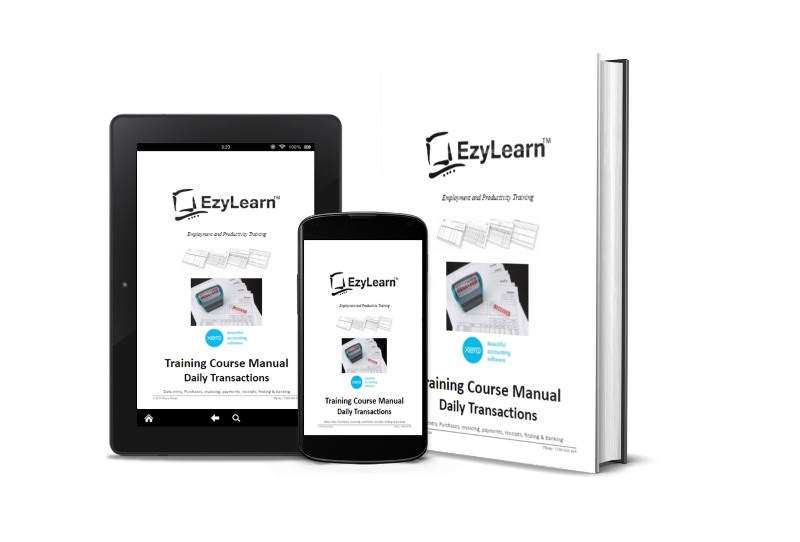Introduction to Financial Reporting
Financial Reports help you understand the health of a business so that you can make informed decisions. These decisions vary depending on your relationship with the business. If you are an owner your insights will be different from that of a manager or outsider and different again from an accountant who sees the financials for many different kinds of businesses. Here’s an example of some questions or decisions that result after viewing the financial reports:
- Whether you should buy or sell for share investors
- Which expenses to cut if a business is struggling
- Where should we invest money to help it grow
- Are are margins enough to keep the business going
- Are we better off using our profit to pay down debt
Some Financial Reports show income and expenses (Profit and Loss or Income Statement), while others show the value of Assets vs Liabilities (Balance Sheet) and running multi-year financial report comparisons can reveal the results of executive decisions and company strategy.
The Important Facts & Ratios
Financial reports show what has happened in the past and with publicly traded companies they are audited by external accounting firms to verify that what has been report is in fact the truth. Publicly traded shares that can be bought and sold on stock exchanges every day clearly show the total value of the business as well as profit, assets and debts as a comparison to total value.

This is a snap shot of Australia’s leading bank, Commonwealth Bank of Australia at their own share trading site – Commsec. This is a conservative business with millions of shareholders in a stable industry that most investors understand. We know it makes a profit from lending money to people – mainly for residential mortgages. It is important to know that these figures and ratios change every time the share price changes and every time there is an announcement about their financial performance.
Here are some ratios that help make sense of their financial health.
- Price to Earnings Ratio (P/E): Compares the net profit with the net earnings per share.
- Earnings Per Share (EPS): Total net profit divided by the number of shares to come us with an Earnings Per Share.
- Price to Book: The current price compared to the total value of the shares on the balance sheet
- Debt to Equity: Essentially shows how much debt the business has
Different Types of Revenue, Income and Earnings
The only reason we know these ratios is because we compare the financial reports with a known value for the business (or shares in the business) but it is hard to get these ratios for most small businesses because we don’t really know the total value of a business.
Each of these values relates a known fact (financial report) with something that changes (total value/price). If we take a look at Earnings we know that relates to the total sales or revenue of the business but there are lots of different type of earnings, including.

What we do know is the figures in financial reports and the above image from the Xero UK site shows it simply as bags of money getting smaller after you take out some of the costs of operating a business. The costs are separated into:
- Cost of Goods Sold
- Operating Expenses
- Taxes
- Depreciation (amortisation)
- Interest
Most people would see this information in the Income Statement which is also known as the Profit and Loss Statement or P&L.
The Income Statement

What the income statement really shows is the total sales (revenue) minus the different categories of expenses. Some of these expenses relate directly to the sales generated like the Cost of Goods Sold (COGS). This is very important for businesses that sell products but equally important and sometimes harder to measure for those selling services and depends on how they charge out.
If you study the table above you’ll see two expenses which relate to assets and liabilities: interest and depreciation. Interest is the cost of borrowing and shows that this organisation has debts to repay and depreciation is the gradual devaluation of an asset.
Income Statement for a Manufacturing Business

The above income statement shows how the Cost of Goods Sold component is far more important for a company that manufactures products. It highlights both the cost of products and the labour component to produce them. The ratios of these costs are affected by price, discounts and profit margin and are important factors for business strategy and decision making.
The Income Statement doesn’t show how much money is owed to the company (accounts receivable) and by the company to its suppliers (accounts payable). This and other information about debts and assets are important to determine the financial health of a business and are reported in the balance sheet.
Different Types of Assets and Liabilities
Assets include cash in the bank, money invested elsewhere while it is not being used in the business and money owed to the business from customers. Credit Management is the name given to the daily and weekly tasks for managing these assets and is explained in the Cash Conversion Cycle.
Accounts Payable and Accounts Receivable Reports

Also known as A/R and A/P, these reports are run on a regular basis to determine and manage the credit risk of the business. Companies that work on slim margins will often work hard on the A/R side of the business and extending the Accounts Payable to use the money they have available as short term funding. These companies will work hard on getting paid quickly while pushing out the payments to suppliers as far as they can while still maintaining a good working relationship.
 These reports are run via the accounting software and the biggest risk comes from customers who take too long to pay. Accounts Receivable reports will often contain an aging component to highlight how much money is owed and how old the debt is.
These reports are run via the accounting software and the biggest risk comes from customers who take too long to pay. Accounts Receivable reports will often contain an aging component to highlight how much money is owed and how old the debt is.
A common credit scenario available to businesses in the trades sector is 30 days after End Of Month (EOM). This means they can buy products on credit throughout the month of March for example and have until the end of April to pay for all those items. The longer it takes to get paid the higher the risk profile of the customer and an Aging Accounts Receivable Report will often show how much money is owed within 30 days, within 60 days and within 90 days and any amount over this is often deemed as high risk.
The tasks, procedures and policies around getting paid and giving customers credit is called Credit Management and it starts as soon as you give a customer a quote.
Long Term Debt and Assets
Better known assets include Plant and Equipment, Property and Intellectual Property and these assets are bigger assets that have a longer term value to the business. Most assets in this category remain on the Balance Sheet, which is also known as the Statement of Financial Position.
When an asset is purchased several things can happen to it, including:
- It can be depreciated over time
- It can be impaired
- It incurs interest charges
Depreciation occurs over different timeframes depending on the asset class and if there are significant changes in the market then a capital purchase can be reduced in value (impaired).

Xero suffered an impairment of the value of it’s purchase of Planday Workforce Management Software. It affected the net profit of the business but did not affect the cashflow because it is a capital purchase.
Notes to the Financial Reports
Notes to the financial reports explain the figures in a little more detail and often provide and explanation, particularly where several different methods of valuation can be used or how assets are treated. This is an excerp from the Xero 2023 Annual Report:
The recoverable amount of the Planday CGU of $195.7 million at 31 March 2023 was calculated on the basis of fair value less costs of disposal in accordance with NZ IFRS 13. This valuation methodology yields a higher recoverable amount than that obtained using a value in use valuation approach and therefore is the approach required to be used in calculating impairment under NZ IAS 36. Fair value was determined using a 12-month look back peer company revenue multiple of 5.2 (2022: 12.2), including a control premium of 32% (2022: 20%). The recoverable amount is classified as level two on the fair value hierarchy.
As the fair value less costs of disposal is less than the carrying value of the CGU of $273.7 million, an impairment of $77.9 million has been recognised in the current year.
As a result of the impairment, goodwill relating to the Planday CGU was reduced from $216.5 million to $138.6 million. The impairment charge is recorded within asset impairments and disposals in the Income Statement for the year ended 31 March 2023. The impairment results from a reduction in market valuation multiples, along with operational performance.
You can see from the notes that Xero could have used a different valuation method that would have resulted in a larger impairment of asset value.
Other Common Financial Reports
The financial reports listed above show the final figures that can be used to make business decisions yet some reports are generated to ensure that the internal data is accurate or for review by a more senior accounting staff member.
Here are some of those reports:
- Trial Balance
- General Ledger
- GST Reports
[gravityform id=”1″ title=”true” description=”true”]

 We work remotely from home and we’d like to help you.
We work remotely from home and we’d like to help you.